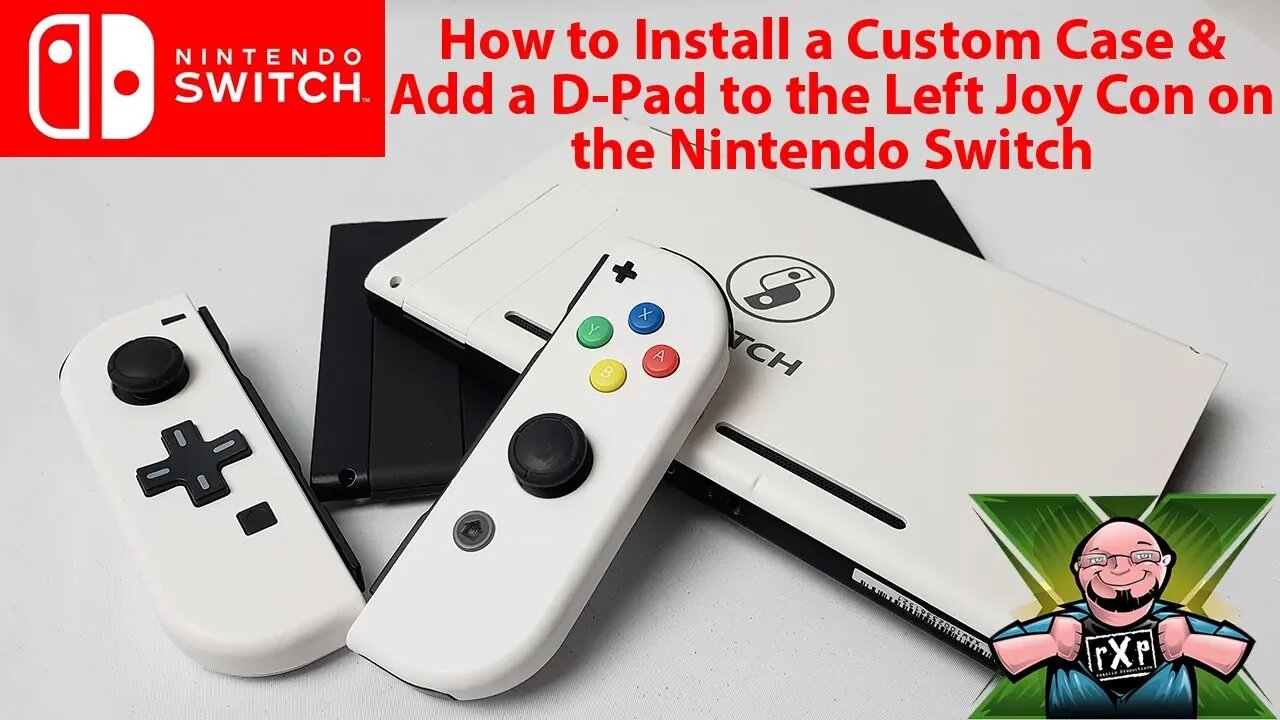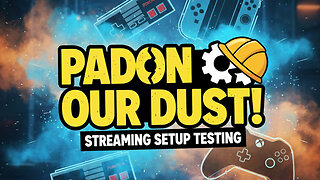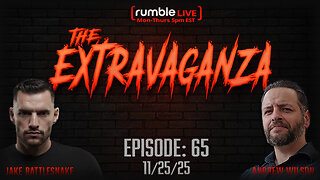Premium Only Content

How to Install the Basstop Custom Case & D-Pad on the Nintendo Switch Joy Cons & Switch
In this video, we share our experiences installing the Basstop Replacement Shell Casing for the Nintendo Switch.
The Nintendo Switch is a pretty amazing little machine, and it has definitely reversed course for the Big N from what the Wii U was doing. The problem with the Switch is, unlike some of the other systems on the market, there haven't been any real variants between the grey and blue/red Joy Con versions. There are new systems coming, between the Super Smash Bros and Pokémon variants, but that's more of a skin or slight graphic tweak to the existing grey look.
Basstop has offered a variety of different replacement cases and shells for the Switch for some time. One of the biggest advantages of the Basstop cases has to do with the left Joy Con. The Basstop left Joy Con shell replaces the up, down, left, right buttons with an actual D-Pad! Yeah, just for that I was pretty excited. The right Joy Con isn't forgotten as the A/B/X/Y buttons are replaced with Super Famicom colored buttons.
I ended up going with the White case myself, I liked the way the white made the switch look like a piece of Stormtrooper hardware. Shipping was quick from Amazon and I was able to get to the installation rather quickly. I didn't realize that the case also included the colored buttons, so I actually had ordered a second set off of eBay. Whoops!
To disassemble the system you'll need a Tri-Wing Screwdriver and a #00 phillips screwdriver. Other tools that would be useful would be a set of tweezers, dental pick, magnetic parts tray and magnetic-tip screwdrivers.
Disassembly started with the Joy Cons and there is a lot going on here that you can get tripped up with. I ran into issues getting the analog sticks out and around this little membrane inside the case itself. Take your time, it will come.
Another place you need to take your time with is installing the buttons back into the new shell. They are indexed and will only function properly in one direction.
In the video, you'll see I accidentally pulled the battery out of the left Joy Con. Not only did I pull the battery out but I actually pulled the contacts out of the molded housing. This meant I had ruined my battery and had to order new ones.
On the right Joy Con, the processes was a little more in-depth while also being a little easier, thanks to my experience with the left Joy Con. The biggest issue I ran into with the right Joy Con was getting the rail back into the case. I actually had to shave a little material off the case itself to get the rail to sit properly with the face of the Joy Con.
Installing the back plate was the easiest of all, no major disassembly required here! The fitment between the kickstand and the case did leave a bit to be desired, especially for how the base of the kickstand rests in the case when closed. There's a small screw there that interferes with the kickstand, where-as the stock kickstand has a minor notch to accommodate this. I removed a little material with a hobby knife and it fits better, but not great.
Why It RoX:
- At $45 reasonable price
- Provides D-Pad for left Joy Con
- Really gives the Switch a unique look
- Super Famicom-style buttons look great
What could be improved:
- The rail didn't fit well in the right Joy Con
- No double-sided tape or adhesive included
- Some hand-fitting of parts required
- Poor fitment between the kickstand and the back of the case
The footage used in this review are used under the Fair Use laws, referenced below:
https://www.law.cornell.edu/uscode/text/17/107
Notwithstanding the provisions of sections 106 and 106A, the fair use of a copyrighted work, including such use by reproduction in copies or phonorecords or by any other means specified by that section, for purposes such as criticism, comment, news reporting, teaching (including multiple copies for classroom use), scholarship, or research, is not an infringement of copyright. In determining whether the use made of a work in any particular case is a fair use the factors to be considered shall include—
(1) the purpose and character of the use, including whether such use is of a commercial nature or is for nonprofit educational purposes;
(2) the nature of the copyrighted work;
(3) the amount and substantiality of the portion used in relation to the copyrighted work as a whole; and
(4) the effect of the use upon the potential market for or value of the copyrighted work.
The fact that a work is unpublished shall not itself bar a finding of fair use if such finding is made upon consideration of all the above factors.
(Pub. L. 94–553, title I, § 101, Oct. 19, 1976, 90 Stat. 2546; Pub. L. 101–650, title VI, § 607, Dec. 1, 1990, 104 Stat. 5132; Pub. L. 102–492, Oct. 24, 1992, 106 Stat. 3145.)
-
 29:50
29:50
RoXolidProductions
1 month agoPardon Our Dust - Setting Up Restream on YouTube & Rumble
712 -
 1:01:48
1:01:48
BonginoReport
4 hours agoWaddle & Gobble Receive Presidential Pardons! - Nightly Scroll w/ Hayley Caronia (Ep.185)
101K27 -
 53:41
53:41
Katie Miller Pod
3 hours agoMike & Kelly Johnson on Marriage, Family, & Demands of the Job | The Katie Miller Podcast Ep. 16
21.8K12 -
 1:31:04
1:31:04
The Daily Signal
4 hours ago $2.67 earned🚨BREAKING: Judicial CHAOS—$7 Million Somalian Fraud Scandal Thrown Out, Trans Terrorist Released
16.8K10 -
 9:07:11
9:07:11
GritsGG
10 hours ago#1 Most Warzone Wins 4049+!
18.1K1 -
 1:05:43
1:05:43
TheCrucible
5 hours agoThe Extravaganza! EP: 65 (11/25/25)
109K12 -
 7:29:53
7:29:53
The Rabble Wrangler
17 hours agoBattlefield 6 Free Week | Come Play With The Best in the West!
10.1K -
 1:35:57
1:35:57
Kim Iversen
4 hours agoThe Macrons Tried To KILL Candace Owens?
48.8K91 -
 1:15:59
1:15:59
vivafrei
7 hours agoKash interview - 27 Minutes of No Answers! Another Soft-on-Crime Catastrophe! Pedo Coach? & MORE
186K101 -
 1:21:29
1:21:29
Winston Marshall
6 hours agoThe Dangerous Fracturing on the American Right Over Israel
35.9K101